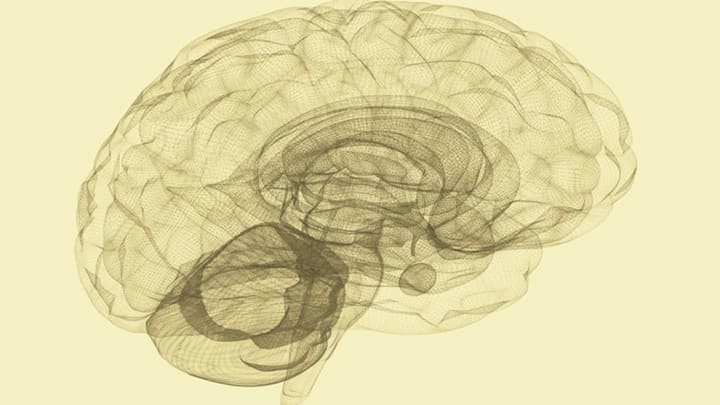Anyone who has watched the slow unraveling of the mind of a loved one to Alzheimer’s disease knows how crucial it is to develop new treatments. In America alone, currently more than 5.3 million people are living with Alzheimer’s and 15 million are providing care for loved ones with the disease. Unless treatments are developed to slow or even cure it, 28 million baby boomers will fall ill with Alzheimer's by 2040, consuming 24 percent of Medicare spending, according to a report from the 2015 Alzheimer’s Association International Conference (AAIC).
Alzheimer’s, an aggressive form of age-related dementia (of which there are several forms), is a result of accumulations and “misfolding” of proteins in the brain known as amyloid fibrils and tau tangles. In large amounts, these proteins are toxic to brain cells and cause degeneration.
But there is hope on the horizon for earlier detection due to new research, and new studies into treatments that may eventually lead to drugs and, possibly, a cure. Since Alzheimer’s is generally considered an elderly person’s disease, very early onset Alzheimer’s—which can begin as early as age 50—often goes undetected until it’s far too late for significant symptom treatment. That's why earlier detection is such a focus of research.
1. Testing Saliva May Allow for Earlier Detection
Alzheimer’s researchers are excited about the potential of a new saliva test, the work of a neuroscience graduate student at the University of Alberta, Canada named Shradda Sapkota, who presented her research at the AAIC in July. Using a form of protein analysis called liquid chromatography-mass spectrometry (LCMS), researchers analyzed saliva samples to determine which substances were predominant in the saliva of Alzheimer’s patients, and considered this in conjunction with cognitive information on the patients. The results suggest that higher levels of certain substances are present in the blood of Alzheimer’s patients and predicted “worse episodic memory performance” and “slower speed in processing information.”
Currently, no known blood or saliva test exists, though research has and continues to be done on potential blood-based biomarkers and a saliva test that could be used for early detection. “This is the first we’ve seen a potential saliva test presented,” Heather Snyder, director of medical and scientific operations at the Alzheimer’s Association, tells mental_floss. “While it’s still in the very early days, we are going to need this tool, and it may be a low-cost way to look at who will need more aggressive screening and treatment.”
2. Sampling Cerebrospinal Fluid: the Canary in the Coal Mine
The cerebrospinal fluid (CSF) that offers protection to the brain and spinal cord might also contain a key biomarker of Alzheimer’s. When the brain experiences injury or toxicity, certain proteins are released into the CSF. One such protein, neurogranin—which is found only in the brain—has turned up in significantly higher amounts in the CSF of Alzheimer’s patients, suggesting it may be a powerful marker for diagnosis and prognosis of Alzheimer’s. However, this is a more invasive form of obtaining diagnosis, usually reserved for those who are younger or in what is known as “mild cognitive impairment” stage, where they still have relatively good memory and functioning.
The earlier Alzheimer’s is caught, the better the effectiveness of existing medications like Aricept. These medications don’t slow the disease or cure it but, says Snyder, “they turn up the volume so the brain cells that are still there can talk to one another longer—like a hearing aid.”
3. Imaging Inflammation: PET Scans Offer Noninvasive Diagnostics
PET scan technology, an imaging technique in which a radioactive tracer is used to look for disease in the body, has made it possible to isolate out tau tangles in the brain, which—along with amyloid plaques—are a key marker of Alzheimer’s. The presence of tau tangles helps to understand how advanced a person’s disease may be. PET scan imaging is also a relatively noninvasive detection method that may help with earlier diagnosis. “We’ve seen real development of this technology,” Snyder says. “It gives us the ability to look at the change and build-up of proteins over time in the brain.” The imaging can also be used to track inflammation, whose role in Alzheimer’s is still being investigated. PET scans can also monitor microglial cells, the brain’s immune cells, by tracking a protein that turns up when these healthy cells are destroyed and give a better picture of brain health.
4. An Inhibitor Molecule Breaks the Cycle
Of the breakthroughs that hold the most promise for a cure, inhibitor molecules, which bind to enzymes and proteins and help keep their homeostasis, show potential to stop formation of the amyloid proteins that build up in Alzheimer’s disease. One such molecule, known as “Brichos,” which is technically a “chaperone” molecule—a type of molecule that helps proteins in the brain to form properly—has the ability to stick to misbehaving amyloid fibrils that cause brain degeneration, according to a study published in the journal Nature Structural & Molecular Biology.
These inhibitors may be able to interrupt the key phase where amyloid fibrils become toxic clusters, the hallmark of Alzheimer’s disease, but also a key in diseases like Parkinson’s. Inhibiting amyloid fibrils is the most critical stage in prevention of Alzheimer’s because once amyloid proteins misfold, they can create a chain reaction where other proteins follow suit—known as oligomers, creating swifter toxicity and degeneration of brain neurons. Although the studies were done on mice, this discovery is a promising area of research for treatments, and maybe even a cure. Preliminary research is promising, though it is still in the early stages of study.
Editor's note: this post has been updated.
